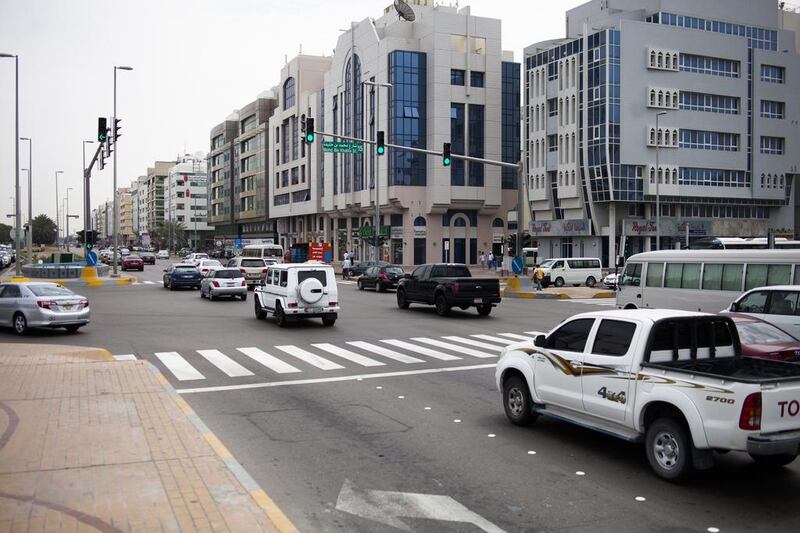ABU DHABI // Reducing the speed limit, building raised kerbs and installing more speed cameras will help to reduce the number of crashes at junctions, a police engineer says.
In 2012, 9.3 per cent of severe accidents in Abu Dhabi were caused by drivers going through red lights, said Abdulla Hamad Al Ghafli, a road and traffic engineer at Abu Dhabi Police.
“Of those accidents, 80 per cent were right-angle crashes due to a conflict of the left turn, or through or straight movements at signalised intersections, causing 13 deaths,” Mr Al Ghafli said.
He was speaking on the second day of the International Road Traffic Accident Conference, part of Gulf Traffic Week.
Mr Al Ghafli also suggested reducing the speed limit to 60kph from 80kph at certain junctions on Muroor, Airport and Khaleej Al Arabi roads.
“There is also a need to separate the through traffic from the left-turn movement by a raised kerb,” he said.
“Drivers see the bars as a temporary structure but if we replace them with raised kerbs, it would definitely reduce the number of accidents at intersections.”
Mr Al Ghafli said left-hand turns at traffic lights were a major scene of accidents.
Last week, Brig Hussain Al Harthi said the directorate would continue to instal more infrared speed cameras at junctions.
The cameras are programmed to detect traffic offences including driving through red lights, blocking pedestrian paths and speeding.
They are part of the traffic department’s monitoring project, which started in 2012 with cameras at more than 150 junctions in Abu Dhabi, Al Ain and Al Gharbia.
Fifty of the 150 junctions with traffic lights in Abu Dhabi have already been fitted with surveillance cameras.
“However, a change in driver behaviour is needed,” Mr Al Ghafli said. “Most of the accidents we see at signalised intersections are speeding, drivers being distracted, a lack of attention on the road and drink driving.”
On Monday, Dr Atef Garib, another roads expert at Abu Dhabi Police, said a traffic-safety programme was being developed.
“We need to work on the engineering through a proper design, focus on educating the drivers, and the last step is enforcement,” Mr Al Ghafli said.
“We are talking of a country with different nationalities with different driving cultures.
“Those who are coming from Dubai and the Northern Emirates and the GCC may not be familiar with these signal phasing sequences, so education is crucial.”
rruiz@thenational.ae






